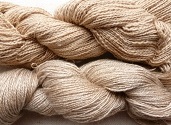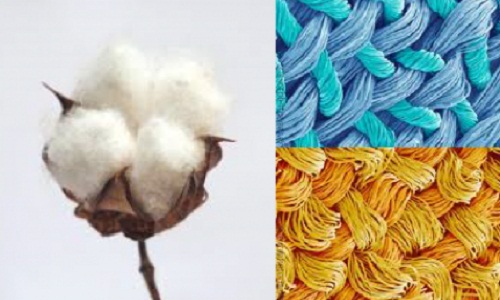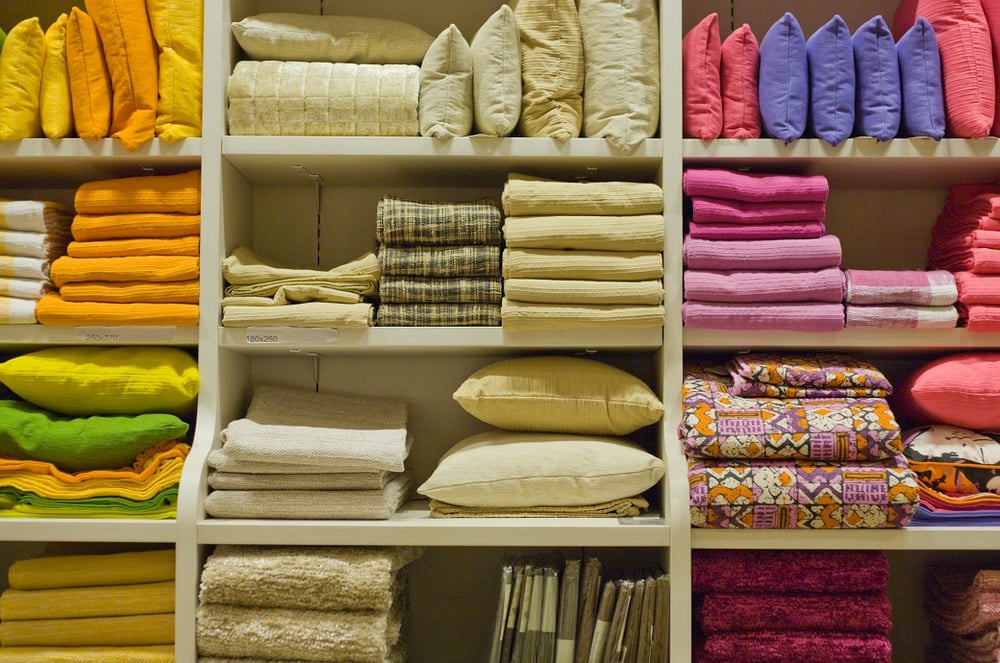FW
Textile and apparel companies around the world are seeking better solutions and more sustainable models for their future development and supply chain management. Due to uncertainties and challenges in global textile sourcing, and with manufacturing and trading being driven by political and economic factors, companies are looking at more extensive integrations and collaborations to increase stability and sustainability in supply chain management.
Technology and innovation are not only beneficial to the textile production process but also helps in the development of new textile materials with different functionalities. The global textile market is experiencing an increasing demand for functional textiles in diverse industries such as aerospace, shipping, sports, agriculture, defense, health care, and construction.
Technical textiles and smart textiles are seen as the best solutions for meeting the requirements of health and safety, strength and durability, weight, versatility, customization, user friendliness, and eco-friendliness.Textile companies have transformed their production lines from mass production of fast fashion items to manufacturing more value-added technical and smart textiles; this trend is expected to continue over the next few years.
Modern data and information technology allows companies across the globe to form a virtual connection, whereby supply chain partners can exchange data and information in real time. This is viewed as the best solution for the problem of uncertainty in the global textile supply chain.
Pakistan’s exporters say they are losing market share because of loss in competitiveness. These issues include the high cost of doing business, including high withholding and indirect taxes, and a distorted import tariff structure; weak implementation of export promotion measures; lack of coordinated support from formal institutions at federal and provincial levels; the relatively high cost of energy vis-a-vis regional economies; and an exchange rate regime that hurts exporters.
Another problem exporters face is in getting their duty drawback. The country’s falling competitiveness is also driven by poor trade facilitation, infrastructure gaps, inefficient logistics and poor investment climate.
Export competitiveness can be improved by making use of the country’s GSP Plus status and bilateral and regional trade agreements, for example with China, Malaysia, and Sri Lanka. Exporters say an export-oriented industrial policy is needed with a focus on broader institutional support to exporters along with a duty-free regime for inputs and a strategic collaboration between public and private sectors. Small and medium enterprises need to lend financial and technological help with a focus on operational management skills, financial assistance, innovation, and technological upgradation. What’s also needed is capacity building through education and training along with agreements to ensure transfer of foreign technology.
The Indian textile and clothing industry is set to grow substantially in the coming years. Growth will be driven by strong expansion of the domestic market as well as higher exports, aided by incentives and support policies. The textile policy has the aim of securing a substantial increase in exports by 2024-25 and generating 35 million new jobs, most of which would be taken by women.
‘Make in India’ initiative is aimed at transforming the country into a global manufacturing hub with the support of foreign manufacturers. India became the world’s leading recipient of FDI in 2015 — ahead even of China and the United States. Foreign investors have been attracted by India's sizeable and fast growing domestic market.
India's domestic market for textiles and clothing is forecast to growth 14 per cent per annum over a 12-year period — as a result of rising prosperity and a continuously growing population. High profile brands, including Aéropostale, Gap, H&M and Massimo Dutti, have entered the Indian market in recent years. Also global up market and luxury brands are looking to use the country as a base for manufacturing and supplying worldwide markets as well as supplying high income and middle income consumers in India itself.
The just concluded Dhaka Apparel Summit showcased the development of textile and apparel industry in Bangladesh. This year’s focus was on sustainability in apparel supply chain with the specific aim of creating a better future together. Panel discussions offered an interactive approach and the opportunity for a valid exchange of ideas.
Among suggestions to improve Bangladesh’s readymade garment industry were moving women into management roles, better training of the workforce and lower and mid-level managers and competitive wages. Vocational and soft skill training were seen as the need of the hour, together with trust and collaboration. Speakers said the race for cheap goods, which Bangladesh is currently doing, involves the risk of stagnation. Businesses were also exhorted to take the initiative in sustainability.
Buyers wanted assurances about issues such as environment, gender, labor rights and worker health. Buyers wanted products that meet the demands of their customers. They also wanted assurances that their markets and their major sources of goods are stable and dependable. Marks & Spencer does the bulk of its sourcing from Bangladesh. Where M&S ordered simple products like basic polo shirts and denims in the beginning, it has now moved up to value-added products like dresses and tailored suit jackets.
Textile mills in Nigeria are shutting down. Reasons include poor maintenance, mismanagement, smuggling, little or no access to funds, low supply of electricity and high cost of inputs, competing textile imports from Asian countries and dumping of substandard fabrics in the country.
In the 1980s the country had over 200 factories producing fabrics for local and international markets. Between 1985 and 1991, the textile sector was responsible for 25 per cent of the entire manufacturing sector in Nigeria. Textile factories in the country are now producing below 30 per cent capacity. There are less than 30 functional cotton, textile and garment mills in the country. Capacity utilisation in the remains abysmally low.
Huge amount of money have been committed to revival of the industry in recent years but without any appreciable results. In spite of the importance of the textile industry to the economic recovery of the country, especially on account of its revenue and job creation abilities, little has been done to maximise its potential. In the face of stiff Asian competition, manufacturers are asking for protection. Traders, on the other hand, want a quick propping up of the local currency to make imports affordable. Until such interventions happen, more traders and manufacturers will be at the mercy of Asian suppliers.
"In the Age of Sail, all lines and sails on ships were made of natural fibres, mostly hemp and sisal for ropes, and linen for sails, and millions of tonne of each fibre were produced each year. Today, with the exception of museums, all ships’ lines and sails are made of nylon, polypropylene or polyester, and world production of natural fibres used in lines and sails has reduced to just a few hundred thousand tonne. Prior to the advent of ‘fast fashion’ and ‘casual Fridays,’ wool was a major apparel fibre. In the 1960s, wool accounted for 10 per cent of world apparel fibre use. Today, wool accounts for 1 per cent of world fibre use."

In the Age of Sail, all lines and sails on ships were made of natural fibres, mostly hemp and sisal for ropes, and linen for sails, and millions of tonne of each fibre were produced each year. Today, with the exception of museums, all ships’ lines and sails are made of nylon, polypropylene or polyester, and world production of natural fibres used in lines and sails has reduced to just a few hundred thousand tonne. Prior to the advent of ‘fast fashion’ and ‘casual Fridays,’ wool was a major apparel fibre. In the 1960s, wool accounted for 10 per cent of world apparel fibre use. Today, wool accounts for 1 per cent of world fibre use.
In the 1800s and early 1900s, cotton accounted for 75 per cent of world fibre use, and in the 1960s, cotton still accounted for two-thirds of all fibre use. By the 1980s, cotton’s share had reduced to half, and today, cotton’s share of world fibre consumption is less than 30 per cent, and still reducing.
China – the biggest catalyst

As China started to industrialise in the early 1980s, textile production was a leading area of investment. In 1990, polyester fibre production in China was about 1 million tons but by 2015, polyester production in China had grown to approximately 35 million tons, equal to 70 per cent of the world total. The 35-fold increase in polyester production in China in 25 years is the single biggest factor reducing world demand for cotton today.
There are no comprehensive statistics on the number of polyester fibre production plants in China, their ownership, sources of financing or operating costs. However, the growth in polyester production in China has been so rapid, so enormous and so incongruous with investment patterns in other countries in Asia, that it is impossible to believe that industry expansion is a result of competitive, private sector investment. The cost of construction of a polyester plant with a capacity of 250,000 ton per year is estimated at about $150 million. It has been widely reported that the national, provincial and local governments in China encourage industrial expansion through loans that are never repaid made by government-owned banks.
Given the emphasis by all levels of government in China on textile production since 1990, it is highly likely that much of the expansion of polyester production capacity occurred with the help of loans that have become grants. It would be naïve to think that the expansion in polyester production in China occurred because Chinese consumers were demanding more polyester or that other market forces encouraged such growth. The expansion resulted from the industrial policies of the Government of China. Loss of market share for cotton has been largely the result of policies of the government of China following China’s accession to the World Trade Organization (WTO) in 2001 and the end of the Multifiber Arrangement (MFA) in January 2005.
Need of the hour
With global economy becoming highly competitive, and industries facing strategic threats, natural fibres, more than most other agricultural commodities are facing stiff competition from manmade alternatives. As of 2016, cotton appears to be the declining industry, stuck between low prices for polyester and huge stocks of cotton, as well as under attack from government agencies wishing to limit cotton production because of perceived environmental and social harm. The governments of countries concerned about the health of the cotton economy must unite to confront these threats. Governments must also premise policies and programs to enable cotton producers to innovate, adopt and implement the latest technologies that produce increased yields at lower costs and offer fibre to textile mills at prices competitive with polyester.
Governments with an interest in the preserving the global cotton industry needs to unite in the WTO to oppose China’s subsidization of polyester production, in the same way that governments have waged a campaign to reduce direct government measures that distort cotton production and trade. If that’s not done, then cotton’sloss of market share will keep on growing, and the livelihoods of cotton producers will be further compromised.
The special package India has offered the textile sector hasn’t found too many takers. The software is such that even a slight incompatibility between the credentials of the employee, as provided by the employer, and the employee’s Aadhaar card details would mean rejection. The package for the sector included making EPF optional for employees earning less than Rs 15,000 per month. The idea was to ensure there is more cash in the hands of such workers. However, the proposal needs an amendment to the EPF Act, which has yet to be done.
Trade unions are not happy with the proposal as they feel it would deprive workers of even a modicum of social security. The scheme’s objective was to achieve a cumulative increase of $30 billion in textile and garments exports and investments of Rs 74,000 crores in the sector over three years.
The package includes introduction of fixed-term employment, in line with the seasonal nature of the industry, additional interest subsidy incentives under the technology upgradation fund scheme and an enhanced duty drawback coverage for exports. Policy makers want to extend these provisions to other employment-intensive sectors like leather and footwear.
China’s cotton auctions may shrink the country's stocks to their lowest in six years. The auctions will offer 30,000 tons of cotton a day, although more could be released if demand warrants. The country's overall inventories will fall to 9.3 million tons as by the end of this season, extending further their decline from a high of some 13 million tons reached two years ago.
China’s total stocks are expected to drop further to 7.5 million tons by the close of 2017-18, contrasting with a rise of seven per cent in world inventories, lifted by rising Indian, Pakistani and US production. This would mark the first season since 2011-12 that China’s stocks account for less than half of world inventories. World inventories at the close of next season are set at 83.9 million bales including 39.7 million bales of Chinese supplies.
However, there are doubts whether China will succeed in selling as much cotton from its 2017 auction program as it did from last year’s. The quality of the fiber offered this time may be lower. There is a feeling China sold off the best of its reserves in its 2016 sales. This suggests China’s stockpile may come in the market at a slower pace than last year.
Sourcing event ‘Meet the Manufacturer’ will be held in the UK, May 24 to 25. Over 150 exhibitors will be showcasing the best of British clothing manufacturers, textile mills, leather goods makers, home ware designers and suppliers to the UK apparel and textile industry.
The aim is to help promote UK manufacturing and British-made brands. The event brings together the best of British manufacturers with buyers and designers looking to have their products made in Britain.
This is the fourth year of Meet the Manufacturer. The companies lined up include: Geoff Stocker, producing high end accessories for men; Isabella Queen, a British-based brand offering luxury leather accessories; Wild Things, creating imaginative play clothes for children handmade in the UK; and Unibu, producing unique underwear that’s 100 per cent made in Britain.
This year’s event promises to be bigger and better than ever before and will include a two-day trade show with free drop-in seminars, workshops and live demonstrations with plenty of opportunities for networking. It seeks to reinforce the belief that manufacturing in the UK is thriving, cost-effective and sustainable. The 2016 event attracted over 100 exhibiting companies from across the textile and home ware sectors and from all corners of the British isles.
Trident is best known for its towels, bed linen yarn and paper. In yarn about 32-35 percent is for exports and about 35 per cent is captive and another 30-35 percent in for the domestic market. When it comes to home textiles, that is, towels and bed linen, 90 per cent is exported and 10 per cent goes to the domestic market.
The company has completed its expansion plans recently. Right now yarn is operating at around 92 per cent capacity utilization and paper is operating at around 91 per cent capacity utilization. Towels are operating at a 49 per cent utilisation and bed linen is around 29 per cent utilization.
The company needs about five or six large customers to fill up the entire capacity. Since bed linen is a new business, Trident intends to reach an utilisation of 50 to 60 per cent the next year. During the December quarter Trident had a gross debt of Rs 2,900 crores and a net debt of Rs 2,600 crores. About Rs 800 crores is the short-term and about Rs 2,100 crores is the long-term debt. In this nine month period, Trident repaid around Rs 445 crores, out of which around Rs 165 crores is the pre-payment, which is ahead of schedule.












